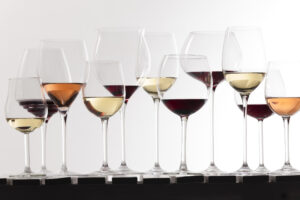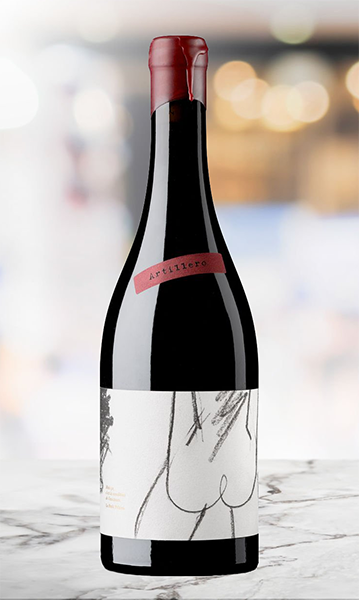
With rich histories and a broad spectrum of flavors, red and white wines have become two of the most renowned and consumed categories of wine. In 2022, Americans consumed 34 million hectoliters of wine — more than any other country — and much of that wine came from popular red and white grapes like riesling and merlot.
Red wines, made from the fermentation of dark-colored grape varieties, produce wines with deep hues and robust flavor profiles. White wines primarily come from green and yellow grapes, and the resulting spirits feature light, rich gold hues, and fruity flavors evocative of apples, citrus, or pears.
Both categories have strong followings and traditions in wine-producing regions around the world. Growing regions, winemaking procedures, and the grapes themselves can result in a wide range of flavor profiles and mouthfeels, further distinguished by the care that winemakers put into embracing the unique potential of both red and white wines.
Red Wines vs. White Wines
The most obvious difference between red wines and white wines is the color. However, there are actually many differences that set the two types of wine apart.
Grape Varieties
The specific type of grape used in winemaking is one of the primary components of a wine’s flavor and body profile. Other factors include the terroir, or the specific region in which a grape grows, and the winemaking techniques used.
Popular Red Wine Grapes
Some of the most notable red wine grapes include:
- Cabernet sauvignon: These grapes produce tannic, full-bodied wines. Common flavor descriptors include black cherry, bell pepper, and cedar.
- Merlot: Merlot grapes produce approachable wines with plum, cherry, and herbal flavors.
- Pinot noir: This grape produces elegant, delicate wines with notes of raspberry, cherry, and earth.
Red wine grapes are typically identified by their red, deep purple, or black shades.
Popular White Wine Grapes
Popular varieties of white wine grape include:
- Chardonnay: Grown all around the world, chardonnay flavors can be apple and lemon in cooler climates, with tropical fruit flavors when grown in warmer areas.
- Sauvignon blanc: Wines made from this grape often have herbaceous flavors reminiscent of lime or green apple.
- Riesling: This versatile grape can produce dry or sweet wines with citrus flavor.
Many grapes are grown around the world, and even the flavor of the same grapes can be influenced by the terroir. Services like wine clubs offer convenient ways to explore wines from different grape varieties around the world, through subscriptions like wine of the month clubs.
Rosé and Orange Wines
Both rosé and orange wines provide fascinating twists on the traditional preparation of red and white wine. Rosé wine production begins like a typical red wine, but after being crushed, the grapes only macerate for a brief time before being pressed and fermented in a similar manner to white wine.
Orange wines are essentially white wines made in the style of red wines. Unlike traditional white wines, orange wines are fermented along with skins and seeds. These wines get their name from their distinct amber-orange hue, resulting from extended skin contact during fermentation.
Winemaking Processes
While both families of wine follow a similar process, they differ in some key ways. Both red and white wine grapes are harvested when ripe and then crushed to release their juice. One of the most important distinctions between the red and white winemaking process comes after grapes are crushed.
White wines are immediately pressed before fermenting, which separates the juice from the skins and seeds. White wine also often uses a process called cold fermentation, where fermentation occurs at lower temperatures in order to preserve the wine’s fresh and fruity characteristics.
Red wines are fermented along with skins and seeds, which contributes to the differences in color. After fermentation, red wine is pressed to strain the juice from the grape solids. Following these steps, both types of wine are aged in tanks or barrels and then bottled.
Additional optional steps may occur during the winemaking process. Wines can be aged in oak barrels, which can impart flavors like vanilla or caramel from the wood into the wine. Multiple aged wines can also be blended to introduce new flavor and aroma layers to the resulting mixture.
Taste and Mouthfeel
There are many varieties of wine, and even among categories like white and red, there are numerous distinctions. However, there are some general characteristics that separate the types of red and white wines.
Red wines often have a fuller body when compared to white wines due to higher tannin content, alcohol levels, and the complexity of flavors derived from fermenting with their grape skins. White wines tend to be lighter in body and have a pronounced acidity that gives them a sharp, crisp, or tangy sensation on the palate.
Preferences are highly personal, and often influenced over time by experiences, tastes, and contexts. These preferences may lead someone to prefer one type of wine over another, but it’s just as likely that they have yet to discover the right red or white wine to win them over.
Serving and Pairing
Another important distinction between red and white wines is how they are served. In general, red wines are served at slightly warmer temperatures than white wines in order to help accentuate their robust and bold flavors. White wines tend to be served chilled which can highlight the fruity notes.
Pairing food with wine is both an art and a science that is based on understanding the complementary and contrasting interactions between the flavors and textures of food and wine. The essence of a successful pairing lies in creating a balance where neither the food nor the wine overshadows the other.
Red wines typically have higher tannin content due to prolonged contact with grape skins, seeds, and stems during fermentation. This creates a dry feeling in the mouth, which makes red wines pair well with the proteins and fats in red meats by making them feel softer and juicier. The robust and bold flavors of red wines also complement foods with strong flavors, such as grilled meats, spicy stews, or dishes with rich sauces.
The acidity in white wines makes them a good match for balancing with similarly acidic food. This includes salads with vinaigrette, seafood with lemon, or tangy cheeses. White wines also typically have subtler flavors than reds, which means they pair well with lighter dishes like creamy pasta, chicken, or poached fish that won’t overpower the wine’s nuances.
Health Benefits
When consumed in moderation, research shows that wine can have numerous health benefits, including eye health and cardiovascular health. More health benefits may be discovered as study continues.
Research also shows that red wine can have additional antioxidant and anti-inflammatory effects, particularly when compared to white wine. While white wine contains these same compounds, the total content is typically around an order of magnitude less than red wines.
However, the important thing when considering any potential health benefits of wine is to understand the importance of drinking in moderation. Drinking in excess can lead to other issues, and it can also negate any positive health effects.
Deciding Between Red and White Wines
Choosing between red and white wines can be influenced by a combination of personal preference, the nature of the occasion, and the type of food being served alongside it. It’s also important to understand the specific wine you choose to serve. Not all reds are heavy, and not all whites are light. Learning more about wine can help to drive more informed wine decisions.
One way to decide is by evaluating the nature of the occasion. In general, red wines tend to be associated with cooler weather and might be good choices for winter dinners. For formal events, it may be expected to follow traditional wine etiquette and pairing such as pairing red wine with red meat and white wine with white meat or fish, but for casual events, the wine choice can be more flexible.
Perhaps the best way to learn your wine preferences is to taste different types of wines and see which flavors and varieties you tend to enjoy the most. Events like wine dinners can also be a good way to sample different types of wines and learn what makes them different.









